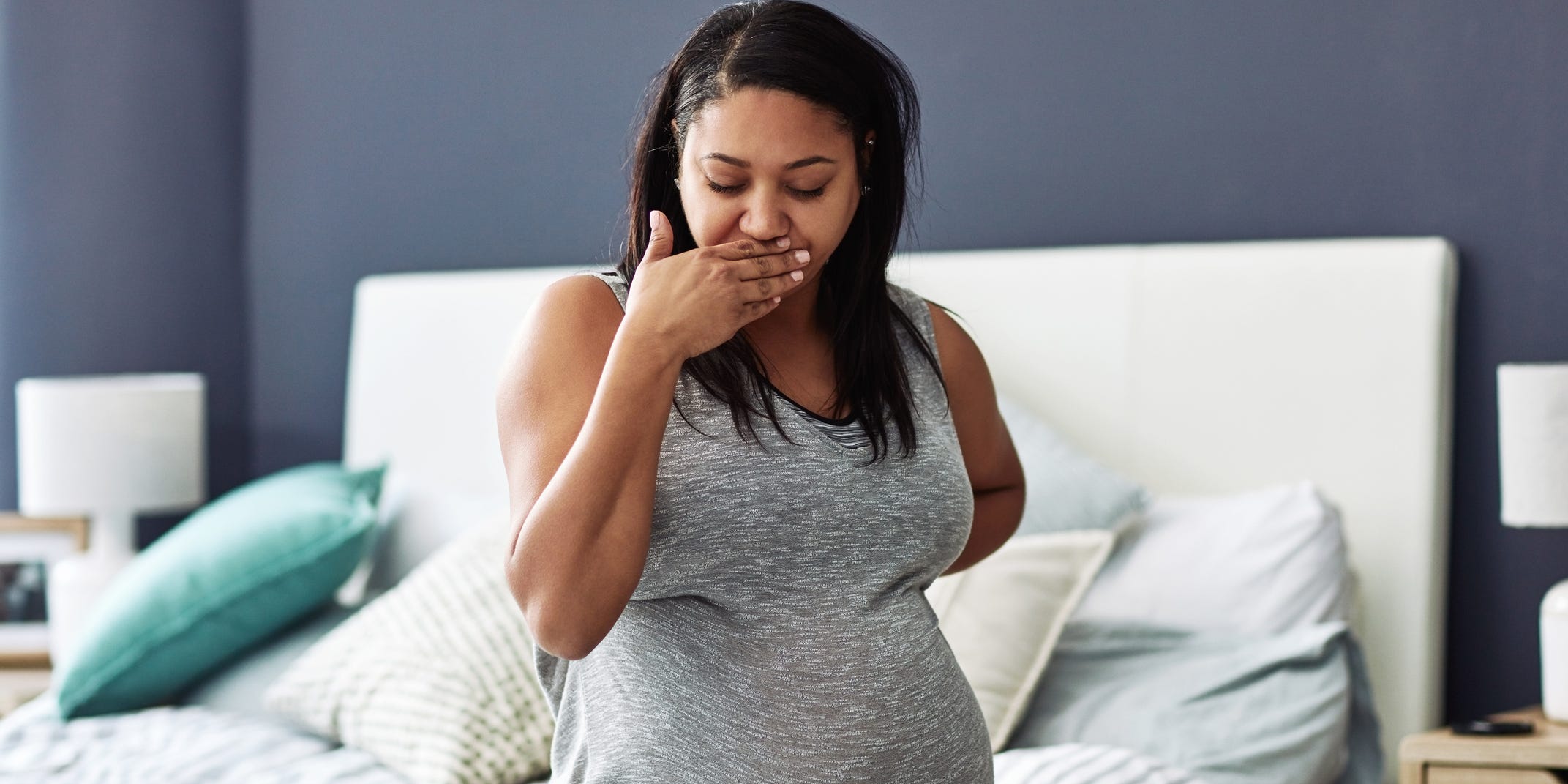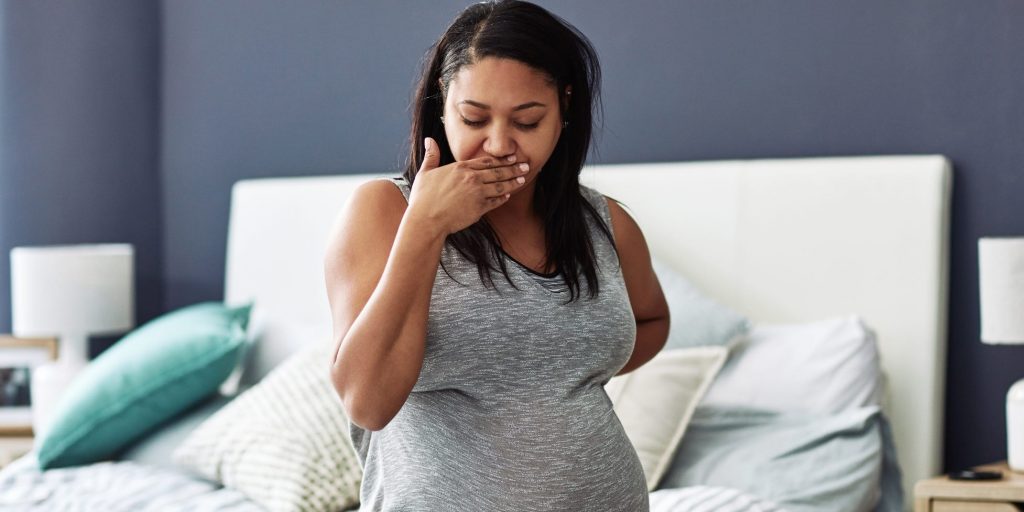
LumiNola/Getty Images
- Nausea during pregnancy usually starts four to eight weeks into pregnancy.
- Nausea typically stops after the first trimester but could last the whole pregnancy for some.
- To relieve pregnancy nausea try to eat ginger, drink chamomile tea, or take Benadryl.
- Visit Insider's Health Reference library for more advice.
Nausea is one of the earliest and most common symptoms during pregnancy. In fact, an estimated 70% to 80% of women experience nausea at some point in their pregnancy.
Pregnancy nausea starts between weeks 4 and 8
Nausea typically starts between weeks four and eight of pregnancy and usually lasts through the first trimester. But some women may have nausea throughout their whole pregnancy.
Despite the name "morning sickness," nausea can occur anytime during the day throughout your pregnancy.
"Because this idea of 'morning sickness' is common, a lot of women don't report their symptoms," says Cynthie Wautlet, MD, an OB-GYN at the University of Wisconsin-Madison.
Reporting your symptoms is especially important since early detection and prevention are the best ways to control nausea.
How to relieve pregnancy nausea
To start, you can make some simple lifestyle changes to help reduce your nausea such as:
- Eat smaller, more frequent meals: "Eating every two hours - just a small amount - can be easier on the stomach," says Wautlet. To feel full from these smaller meals, she adds that high-protein, nutrient-dense foods will help. But you should avoid foods with smells or spices that may trigger your nausea.
- Exercise: "Getting about 30 minutes of moderate activity a day, even just walking, can be a really good thing," Wautlet says. While the exact cause is not clear, a small 2009 study and a small 2011 study, both published in BMC Pregnancy and Childbirth, suggest that pregnant women who exercise in their first trimester are less likely to have nausea in their second trimester.
If your nausea is severe, there are some things you can take that may reduce your symptoms.
- Doxylamine+Pyridoxine (vitamin B6): This medicine is the most common clinical treatment for pregnancy nausea. It comes as a pill that generally includes a dose of 10 to 20 milligrams of doxylamine and pyridoxine per pill. You shouldn't take it if you have certain medical conditions and you shouldn't mix it with certain medications, so consult your obstetrician before taking it.
- Benadryl: This over-the-counter antihistamine medication is usually taken for allergies, but it's also been shown to help reduce symptoms of nausea and vomiting while pregnant.
- Ginger: Several small studies have found that one gram of ginger taken daily can reduce symptoms of nausea and vomiting within a couple of weeks.
- Chamomile, cardamom, and lemon: Some small studies suggest that these may help with nausea, but more research is needed to assess their effectiveness.
- Acupressure: The acupressure point P6, also known as Nei Guan, is located near the middle of your inner forearm slightly below the wrist. A 2018 review, published in the International Journal of Preventive Medicine found multiple studies, which report that applying pressure and massaging the area for a few seconds at a time can relieve nausea.
Who is more at risk for pregnancy nausea?
As far as researchers can tell, there's no one cause of pregnancy nausea. But hormones seem to play a key role. In particular, human chorionic gonadotropin, or HCG, is released by the placenta after the fertilized egg is implanted. HCG levels are often measured by pregnancy tests, and they rise throughout the first trimester.
"The pregnancy hormone HCG in higher levels is associated with a greater risk of nausea in pregnancy," Wautlet says. And that's not great news if you're carrying several babies at once.
"Women who have a twin pregnancy or a triplet pregnancy have higher levels of that pregnancy hormone," Wautlet adds, "so they are much more likely to get nausea compared to a singleton pregnancy."
Pregnancy nausea may also run in the family. A 2016 study published in Behavior Genetics compared survey data from participating twins and their sisters and discovered a link between genetics and the likelihood that a woman might develop pregnancy nausea. The probability of a woman having nausea or vomiting was 73% if her relative also had pregnancy nausea. The data suggest that genetic factors play an important role, and could be a predictive factor to help inform pregnant women of their risk.
Nausea symptoms vary from person to person. In rare cases, women experience severe nausea and vomiting, a condition called hyperemesis gravidarum. "Only about 3% of women at most will actually progress to getting that disorder," Wautlet says.
Insider's takeaway
Nausea during pregnancy is common but that doesn't mean you have to suffer through it.
"A lot of women won't mention it because they think, 'oh, this is normal,'" Wautlet says. "Bring it up and talk to your provider about it because there are things we can do to help."
